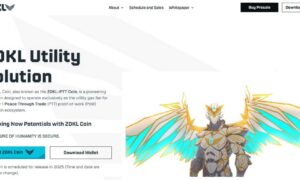In the dynamic blockchain tech landscape, Polygon (formerly Matic) is a pivotal player transforming decentralized finance (DeFi). Its scalable, user-friendly infrastructure acts as a catalyst for decentralized applications (DApps) and financial services, unlocking DeFi’s true potential.
Introduction
Understanding Polygon’s Foundation
Polygon is a layer 2 scaling solution that aims to enhance the capabilities of existing blockchain networks, primarily Ethereum. Founded on the principles of scalability, interoperability, and user experience, Polygon addresses some of the major challenges faced by blockchain networks, such as slow transaction speeds and high gas fees.
Scalability as the Core Advantage
One of the primary reasons for Polygon’s prominence in DeFi is its commitment to scalability. The platform employs a combination of sidechains and the Plasma framework to achieve high throughput and faster transaction confirmations. Polygon’s scalability is a game-changer for DeFi, allowing applications to handle more transactions without sacrificing speed or cost. In the decentralized finance realm, where transaction speed is crucial, Polygon’s scalability provides a competitive edge. Users can interact with DeFi protocols on Polygon without the delays and congestion of other blockchains, enhancing the user experience and enabling innovative solutions with quick, seamless transactions.
Interoperability Amplifying Possibilities
Interoperability is another key aspect that sets Polygon apart in the DeFi landscape. The platform is designed to be compatible with existing blockchain networks, especially Ethereum. This means that developers can seamlessly port their decentralized applications from Ethereum to Polygon, enjoying the benefits of enhanced scalability without sacrificing compatibility.
The interoperability offered by Polygon is a crucial factor in the broader DeFi ecosystem. It allows users to access a diverse range of applications and services across different blockchains without facing the challenges of fragmentation. This interconnectedness fosters collaboration and the sharing of resources, ultimately contributing to the growth of DeFi as a whole.
User-Friendly Experience Driving Adoption
Polygon places a strong emphasis on user experience, making it more accessible to both developers and end-users. The platform’s architecture is designed to be developer-friendly, providing tools and documentation that simplify the process of building and deploying decentralized applications. This approach has attracted a growing community of developers, fostering innovation and diversity within the Polygon ecosystem.
The user-friendly nature of Polygon extends beyond developers to end-users interacting with DeFi applications. The seamless onboarding process and low transaction costs make it an attractive choice for individuals looking to explore decentralized finance without the complexities often associated with blockchain technology.
The Role of MATIC Tokens
The MATIC token is central to Polygon, serving for fees, staking, and governance. Its integration aligns incentives, motivating users to secure and grow the network. Polygon’s staking lets users lock MATIC for security, stability, and rewards, reinforcing decentralization and offering passive income.
Real-World Applications of Polygon in DeFi
The impact of Polygon in the realm of DeFi goes beyond theoretical advantages. Several real-world applications and projects have leveraged Polygon’s infrastructure to create innovative solutions that address specific challenges within decentralized finance.
Decentralized Exchanges (DEXs):
DEXs play a pivotal role in the DeFi ecosystem, enabling users to trade various cryptocurrencies without relying on centralized intermediaries. Platforms like QuickSwap and SushiSwap have migrated to Polygon, capitalizing on its scalability to offer users fast and cost-effective trading experiences.
Lending and Borrowing Protocols:
Polygon has become a preferred choice for lending and borrowing protocols, where speed and low transaction costs are critical. Aave and Curve Finance are examples of platforms that have extended their services to Polygon, providing users with efficient lending and borrowing options.
NFT Marketplaces:
Non-fungible tokens (NFTs) have gained immense popularity, and Polygon has positioned itself as a go-to platform for NFT marketplaces. Projects like OpenSea and Mintable have integrated with Polygon, allowing users to create, buy, and sell NFTs with reduced transaction fees.
Overcoming Challenges and Looking Ahead
While Polygon has achieved significant success, it is not without its challenges. Competition in the blockchain space is fierce, and maintaining its position requires continuous innovation and adaptation. Moreover, ensuring the security and decentralization of the network will be paramount as Polygon continues to grow.
Polygon plans to enhance capabilities by integrating layer 2 solutions and collaborating with other blockchain networks, acknowledging the dynamic nature of the industry and committing to evolving with the landscape.
Conclusion
Polygon is a powerhouse in decentralized finance, providing a scalable, interoperable, and user-friendly environment. Its impact on DeFi is tangible, addressing challenges in the broader blockchain ecosystem. As Polygon unlocks the potential of decentralized finance, its role in shaping the future focuses on innovation, collaboration, and user empowerment.


































